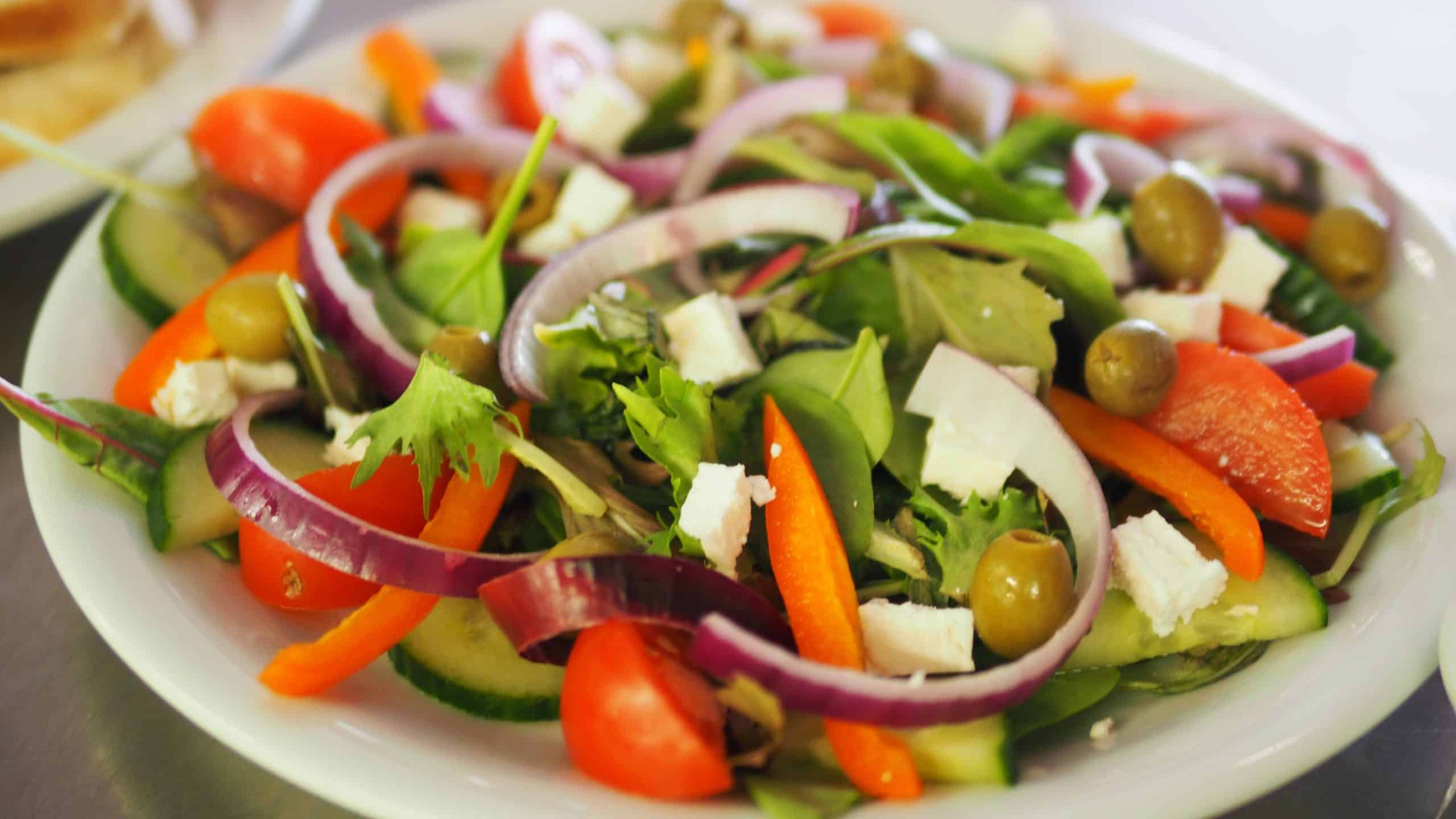Mastering mediterranean salads: fresh and flavorful

Mediterranean salads are a testament to the bounty and vibrancy of the Mediterranean diet. They are bursting with fresh vegetables, hearty grains, protein-packed legumes, and dressed in the region’s signature oils and spices. Here, we’ll delve into the timeless art of creating Mediterranean salads, from selecting the freshest ingredients to mastering the art of seasoning and dressing.
The Basics of a Mediterranean Salad
A Mediterranean salad isn’t just a simple side dish—it’s a showcase of the region’s most vibrant and flavorful ingredients. These salads often serve as standalone meals, brimming with a variety of textures and flavors. So what exactly goes into making a perfect Mediterranean salad?
Dans le meme genre : The joy of homemade ice cream: creamy creations
Ingredients Selection
At its core, a Mediterranean salad revolves around fresh, seasonal vegetables. Traditional staples include ripe tomatoes, crunchy cucumbers, crisp lettuce, and sweet bell peppers. But don’t feel constrained by this list—feel free to toss in any vegetables you enjoy or have on hand. The Mediterranean diet is all about celebrating local and seasonal produce, so let your creativity take the wheel.
Avez-vous vu cela : Diy spice blends for amazing flavor
Adding Hearty Elements
The addition of grains and legumes is what transforms a Mediterranean salad from a side dish to a hearty meal. Chickpeas are a common choice, adding both protein and a satisfying crunch. You could also add bulgur, couscous, or quinoa for a filling, fiber-rich component.
The Art of Dressing
The dressing in a Mediterranean salad is where the magic happens. The flavorless vegetables and grains become a delicious meal when you add the right dressing. A classic Mediterranean dressing will often include extra virgin olive oil, fresh lemon juice, garlic, and various herbs and spices.
Crafting a Classic Mediterranean Salad Recipe
A perfect example of a Mediterranean salad is the Greek salad. It is a simple, timeless recipe that captures the essence of the Mediterranean diet.
Ingredients
- 3 ripe tomatoes
- 1 cucumber
- 1 red onion
- 1 green bell pepper
- 1 cup Kalamata olives
- 200 grams feta cheese
- 2 tablespoons extra virgin olive oil
- 1 lemon, juiced
- Salt and pepper to taste
Instructions
- Chop the tomatoes, cucumber, red onion, and green bell pepper into bite-sized pieces.
- In a large bowl, combine the chopped vegetables with the Kalamata olives.
- Crumble the feta cheese over the top of the salad.
- In a small bowl, whisk together the extra virgin olive oil and lemon juice. Season with salt and pepper.
- Drizzle the dressing over the salad and toss until everything is evenly coated. Serve immediately.
The Importance of Quality Ingredients
In Mediterranean cooking, the quality of your ingredients can make or break your dish. This is especially true for salads, where the simple, uncooked ingredients are on full display.
When it comes to purchasing your ingredients, there are a few key considerations. Firstly, aim for the freshest, most vibrant-looking vegetables you can find. These will not only taste better, but they’ll also pack a more potent nutritional punch. Secondly, don’t skimp on the olive oil. A good-quality extra virgin olive oil can add depth and richness to your salad that a cheaper alternative simply can’t match.
Experimenting with Mediterranean Flavors
Mediterranean salads aren’t confined to a specific list of ingredients or flavors. On the contrary, they’re a blank canvas for you to experiment with different combinations and seasonings.
For a twist, why not try adding some grilled eggplant or zucchini? Or swap out the chickpeas for lentils or white beans?
In terms of dressings, you could play around with different citrus juices, vinegars, or even yogurt for a creamier twist. Spices like sumac, za’atar, or smoked paprika could provide an unexpected flavor kick.
Final Thoughts
Mediterranean salads offer a beautiful balance of freshness, flavor, and nutrition. While there are classic recipes to follow, the beauty of these salads lies in their flexibility. So don’t be afraid to dabble and experiment. With a bit of creativity and a focus on quality ingredients, you’ll master the art of Mediterranean salads in no time.
Mediterranean Cooking Techniques for Salads
Mediterranean cooking celebrates the simplicity of fresh ingredients, and this holds true when it comes to salads. The techniques employed help enhance the flavors and textures of the ingredients, making every salad a culinary masterpiece.
Chopping Vegetables
Starting with the vegetables, it is essential to chop them into bite-sized pieces. This not only makes the salad easier to eat, but it also ensures that you get a mix of flavors with each bite. Whether it is tomatoes, cucumbers, bell peppers, or red onions, a uniform cut adds to the visual appeal of your Mediterranean salad.
Preparing Proteins
When adding proteins like chickpeas or lentils to your salads, make sure they are well cooked. Chickpeas should be soft, but not so mushy that they lose their shape. Similarly, lentils should hold their form without being hard. Soaking these legumes overnight and cooking them until they’re just right are important steps.
Constructing the Salad
The construction of the salad is equally significant. Start by layering your vegetables, followed by the proteins, and then the cheese. When it comes to feta cheese, it is traditionally crumbled over the top of the salad, adding a tangy kick that beautifully contrasts the fresh veggies.
Dressing Application
Lastly, the application of the salad dressing is an art in itself. Whisk together your olive oil, lemon juice, and any spices or fresh herbs you’re using until well combined. The key here is to drizzle, not drench, your salad in the dressing. You want to enhance the natural flavors of the salad components, not overpower them.
The Versatility of Mediterranean Salads
The versatility of Mediterranean salads is largely due to their flexible nature. You can swap ingredients, experiment with different dressings, and even introduce new elements based on your preferences and dietary needs.
Bean Salad Variations
For instance, a Mediterranean bean salad can be as simple as a mix of different beans, fresh herbs, and a light vinaigrette. But there’s plenty of room for creativity. You can add cooked quinoa to make a quinoa salad, include slices of grilled chicken for extra protein, or give it a sweet twist with some fresh fruits.
Meal Prep Adaptability
Mediterranean salads are also perfect for meal prep. You can prepare the ingredients in advance and assemble the salad just before eating. Salads like the Mediterranean chickpea salad hold up well even after a couple of days. Just remember to add the dressing right before eating to keep the salad fresh and crisp.
Time Minutes
While many salads can be put together in less than 30 minutes, don’t shy away from salads that require a bit more time. The additional time spent roasting vegetables or cooking grains can add depth to your salad, making it even more delicious.
In Conclusion
Mastering Mediterranean salads is not about adhering strictly to a salad recipe, but rather embracing the spirit of Mediterranean cooking. It’s about celebrating fresh, seasonal ingredients, carefully choosing your olive oil and dressing components, and not being afraid to experiment.
Whether you’re preparing a simple Greek salad or a more elaborate Mediterranean bean salad with balsamic vinaigrette, remember that quality ingredients are key. And with the right cooking techniques, you can transform these ingredients into a salad that is not just a side dish, but a satisfying meal in itself.
So, go ahead and start your journey into the world of Mediterranean salads. With some creativity and a handful of fresh ingredients, you’re sure to create nutritious, flavorful salads that you’ll love to make and eat.
